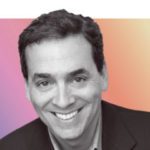
Up until two years ago, the Greater Des Moines Convention & Visitors Bureau lumped together all the data around its meetings and conventions business. And every year, Greg Edwards, the organization’s president and CEO, would present the total direct and indirect investment resulting from meetings to the mayors and government leaders of the 14 municipalities in the Des Moines metropolitan area.
But today, in its sales goals and reporting, the CVB delineates its business by size. Breaking meetings down into three tiers — citywide, multiple-hotel, and single-hotel — and tracking their numbers separately allows the organization to spotlight the economic impact of small meetings, which Edwards says is a sizable sum. Greater Des Moines is also interacting much more deliberately with independently owned venues and businesses outside of downtown that are affected by small meetings.
As a result, the CVB is becoming more relevant to local small business leaders. And by expanding its community outreach and spreading its sales and operational efforts further out into the field, the DMO is networking with a much larger percentage of the local community. “I would say 10 years ago, people looked at CVBs and DMOs as kind of the fun people, like we’re just out having fun and drinking wine with customers to try and lure them to our cities,” Edwards said. “Since then we’ve done a good job of getting the importance of this industry and its impact on economic development more on the top of people’s minds.”
Greater Des Moines isn’t alone. With their budgets under constant review, CVBs and other destination marketing organizations (DMOs) are expanding how they communicate the economic impact of meetings to local business leaders and elected officials. Taking a page from the Convention Industry Council’s groundbreaking Economic Significance Study, which calculated the value of the entire meetings sector across the U.S. economy, they’re positioning themselves as catalysts for economic development with a direct impact on a destination’s growth and quality of living — in some cases by calling out relationships they’ve developed with specific events and how they positively affect people in the community.
PUTTING A FACE ON IT
While DMOs have always promoted how they drive significant visitor spend in their destinations, lately they’re becoming much more strategic and comprehensive in their approach. The better that they can convince local stakeholders and governments of their value as business developers and jobs creators, the more likely they’re able to maintain and improve their funding. This is especially true for second-tier cities, whose budgets are more susceptible to fluctuations in visitor economies and changes in government.
For example, when Visit Anaheim — until recently known as the Anaheim/Orange County Visitor & Convention Bureau — updates the local tourism supplier industry on the latest Anaheim Convention Center expansion, which broke ground this past spring, it highlights the project’s economic and job benefits. Recent messaging reads: “The two-year project will add an additional $9 million of tax revenue to the City of Anaheim, plus 1,860 construction jobs and 2,000 new permanent jobs to the local job force … supporting vital city services such as Fire and Police departments, local parks, and libraries.”

Building that connection between meetings and conventions and a city’s health and welfare underpins the future of DMO strategy on the group side. “I think for many of us, for years, DMOs were steered away from the words ‘economic development’ and ‘community development,’” said Jay Burress, Visit Anaheim’s president and CEO. “Then we began recognizing that we are a big part of our community and we’re a big part of economic development, and we should not shy away from that. We should embrace and really lead the charge in many destinations toward economic development. I think that’s been a big shift, to not just be a part of the sales and marketing of the product, but really the development of the product in a proactive way.”
Expanding on that economic messaging, DMOs are now investing more heavily in their media channels, such as Anaheim’s new “Faces of Tourism” video series, which highlights people employed in the industry. In one of the videos, Judy Hamrick, a catering captain who has worked at the Anaheim Convention Center for more than two decades, says: “I have raised three kids and they had braces and they went to school and they were able to play sports, and tourism has helped provide the finances to do that.”
‘We wanted to kind of humanize our industry.’
The content and tone of storytelling in these videos are authentic and feel natural, but at the same time they communicate a very direct message — that meetings and tourism put food on the table for a lot of people. “We wanted to kind of humanize our industry,” Burress said. “The videos are shown on the city TV station, they’re shown in different City Council meetings. We have a print campaign that’s on some of the buses in town, and it’s starting to resonate with the community.”
Visit Anaheim is also promoting the impact of individual meetings beyond economic spend and job creation. For example, the Natural Products Expo West, which is held annually at the Anaheim Convention Center, donated 61,000 pounds of food to the Second Harvest food bank this year. Another annual client, the NAMM Show — presented by the National Association of Music Merchants — donates musical instruments every year to schools in Anaheim that have dropped their music programs because of cuts in education funding. Visit Anaheim includes NAMM’s Day of Service initiative in the Faces of Tourism campaign. “NAMM sends musicians to the school with these instruments to teach the kids how to play,” Burress said. “It’s great visibility for the industry to show how they’re giving back to the community. We’ve got a series of videos about that this year that we’ve produced that have been very well received.”

THE 12-TOUCH APPROACH
Late last year, Visit Indy developed a systematic plan to share the economic impact of meetings with community stakeholders once a month. Previously, the DMO pushed that message more randomly and infrequently, but President and CEO Leonard Hoops thought the organization could do more. The result was a “12-touch” annual schedule that Visit Indy now uses to structure monthly communications in various formats to update travel industry suppliers about its ongoing initiatives. “So now we’ll incorporate large postcard mailers, or we might look for opportunities to pitch stories to the local business journal to get the message out, or [send out] electronic blasts,” Hoops said. “Or I’ll sign a letter to send out to all of our local representatives about state taxes generated. We’re not just relying on the usual, same old techniques as we’ve all done in the past.”
In January, Visit Indy produced a video called “Breaking Records and Setting the Pace” that details the economic impact of meetings in the city — following a record attendance year in 2014 and a USA Today reader poll that anointed Indianapolis the “Best Convention City” in the United States. Over a racing-engine soundtrack, the video shares a variety of numbers, including “Tourism is an economic engine, generating $4.4 billion” and “Tourism creates 75,000 jobs.”
While many DMOs share those kinds of numbers, a common critique is that the types of jobs hospitality and travel create — in areas such as hotel housekeeping and restaurant service — are low-paying. “For some stakeholders they are perceived as low-paying jobs, but when you frame that around the ability to advance without a four-year college degree, you start to realize this is a great industry because of the options people have without a formal education,” Hoops said. “In the hotel industry, you have the opportunity to move from, say, a front-line position to a management position, or a line cook winds up being a food-and-beverage manager. In many cases they didn’t have a degree.”
Hoops adds that the DMO industry can do a better job of promoting the professional-development opportunities engendered by the economic impact of meetings. “Anecdotal stories of individual examples of people moving up in the industry are a great way to help stakeholders understand the economic value of meetings and tourism,” he said. “It’s really framing the visitor industry as better than most, if not all, in terms of potential upward mobility for someone without a degree.”
Adam Thies, director of the city of Indianapolis’ Department of Metropolitan Development, offers an example of how meetings can lead to new development. In 2013, he was talking with Craig Greenberg, president of 21c Museum Hotels, in Old Indianapolis City Hall during a reception at the National Preservation Conference, presented by the National Trust for Historic Preservation. That conversation led to talks about how the historic building could be redeveloped and repurposed as something beyond an occasional event venue, to better exploit its incredible architecture on a full-time basis.
Two years later, Thies is spearheading an adaptive-reuse project on behalf of the city to develop the 21c Museum Hotel Indianapolis — a prime example of how business leaders at conventions, local culture and community institutions, and city-development agencies collaborate to spur a destination’s growth and improve its quality of life. “Leonard and his team at Visit Indy are at the top of their game when it comes to promoting the value of tourism as much broader than tourism spending,” Thies said. “Visit Indy is really finding a new place at the table in economic development.”
STRATEGIC OUTREACH
In the three years since Alison Best was appointed president and CEO of Visit Oakland, her commitment to engage both the local business community and residents has paid off. Tourism is now being taken more seriously as an economic driver due to the DMO’s focus on research and data. Before Best took over, “The city wasn’t getting research and data on what the hotels and visitor economy looked like,” she said, “and we’ve been doing that.”
Building on that demand, Visit Oakland purchased Destination Marketing Association International’s (DMAI) Economic Event Calculator and Sports Module, and has been using it for the last eight months. “We’re running all of our conventions through that tool now,” Best said, “and we’re able to report out for each convention not only the economic impact in dollars, but how many jobs it’s supporting, what the tax revenue is, what the visitor spending is, and other important metrics.”
On Visit Oakland’s website, anyone can access an annual “Business of Tourism” report that shows economic impact using stats related to total visitors, overall spend, taxes earned, and jobs created, among other indicators. The report also details community partnerships, advertising spend, branding initiatives, and source-market breakdowns. “The traffic to that particular part of the website ranges from city hall to a developer to someone invested in the industry,” Best said. “That’s been received really well, so that’s the proof that it’s becoming relevant. I think it’s important to have information like that visible and have it clearly defined.”
I would say 10 years ago, people looked at CVBs as kind of the fun people, like we’re just out drinking wine with customers.
Visit Oakland’s success also underscores the power of broadening and deepening partnerships. Five years ago, the Greater Des Moines CVB shifted from a dues-based membership model to a partnership model, allowing businesses to create a wide variety of co-marketing initiatives with the DMO. Since then, Greg Edwards said, “the number of our destination partners has jumped from around 400 to well over 800.”
Many partners now participate with the DMO in seasonal co-op marketing campaigns that incorporate the bureau’s “Catch Des Moines” logo, branding, and messaging. For example, Iowa Speedway has a landing page at CatchDesMoines.com with the phrase “Catch Racing Fever,” a schedule of upcoming races, and an embedded booking engine to buy race tickets. The page also includes the DMO website’s standard navigation bar linking to area hotels, restaurants, attractions, and events.
“Each partner participates on a different level,” said Addison Bratvold, marketing partner manager for the Greater Des Moines CVB. “Some have more interest in digital and online ads, while others want to invest more in TV and radio advertising. Not all of our partners participate in the co-op campaign, but do invest in other opportunities like website advertising, sponsoring a CVB-hosted event, donating tickets for us to offer in our Greater Des Moines Getaways on TV/radio, etc.”

BETTER BUSINESS TRACKING
Halfway across the country, Meet Minneapolis similarly has prioritized communicating the effect of hospitality, tourism, and meetings on creating new jobs and expanding the city’s tax base. To facilitate that, the DMO has begun pulling data from the Minnesota Department of Employment and Economic Development to find out how many people are employed in hospitality and tourism — on a neighborhood level. “We’ve gotten so specific, we can tell council members exactly how many employees within the hospitality industry live in a particular ward,” said Melvin Tennant, CAE, president and CEO of Meet Minneapolis. “We’ve begun to communicate that message, and because elected officials are voted in by constituents, we basically tell them that ‘we know your constituents, and they are part of an industry that you need to be aware of.’ That has really begun to help us tell the story of our industry’s economic impact better.”
To spread that message even wider, Meet Minneapolis is producing more integrated data and storytelling on its website. For example, two years ago the DMO launched a comprehensive strategic plan called “A Whole New Playing Field: Imagine 2017” that outlines seven key objectives to improve the effectiveness of destination marketing and drive more visitation to the city. Tennant then updates Meet Minneapolis’ partners on progress being made toward those objectives on his “Melvin’s Message” blog. Tennant’s engaging posts range from interviews with DMO staff to updates from economic-development partners.
Meet Minneapolis’ website also features a “performance dashboard” showing 12 key metrics that range from lodging-room tax to convention-center occupancy. Those numbers are updated daily, and viewers can see how they track against the previous year. The DMO also produces YouTube videos outlining the economic impact of its efforts. On the landing page of the website’s partners section, a “Who Is Meet Minneapolis?” video tells a fun and compelling story about everything the DMO does, beginning with the total yearly dollar impact of tourism and the total number of jobs tourism supports in the city.
The ability of Meet Minneapolis to clearly articulate the return on investment of any marketing activity, Tennant said, “sets the tone for being able to secure more funding” — in both the public and private sectors. “Of the times when we’ve been successful in securing funds beyond our normal annual funding for specific programs, I think the message has been that, yes, we do have a great model to demonstrate return on investment and we’ve lived up to it,” Tennant said. “I think we’ve developed a stronger sense of trust and confidence amongst our elected officials because of that.”
Likewise, as the host city for South by Southwest, one of the most high-profile events in the country, Austin is a perfect case study for how meetings and conventions can have a dramatic impact on a destination’s economic development and brand recognition. “From a convention standpoint in our community, everybody completely understands the impact South by Southwest has provided,” said Steve Genovesi, senior vice president of sales and services at the Austin Convention & Visitors Bureau, “given the public relations and the ripple effect of people and companies moving here.”
The last few years have seen massive investment in Austin’s hospitality and event infrastructure. But the city’s growth spurt is placing increasing demand on its DMO’s convention-services department and its ability to measure its impact. According to Genovesi, the DMO has begun tracking all the leads and referrals it provides to the local business community in a much more structured fashion only within the last year. “In that sense, we have a better idea of our impact that really helps the community when a convention comes to town,” Genovesi said. “Referring small businesses and vendors to our convention planners is such a key factor. Now we can sit down with a restaurant or ground transportation company and say, ‘These are how many groups have inquired about your services,’ to give them a better sense of that link between our bureau and their business.”
Test Time
The Certified Meeting Professional (CMP) is a registered trademark of the Convention Industry Council (CIC).



